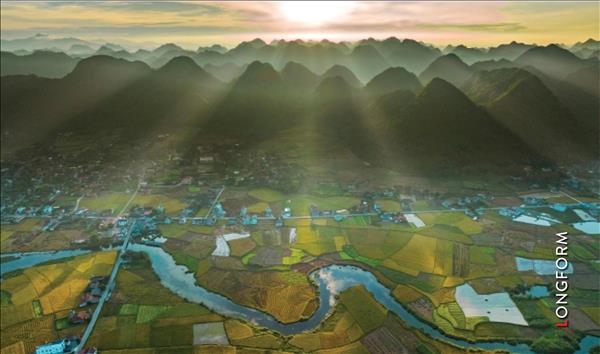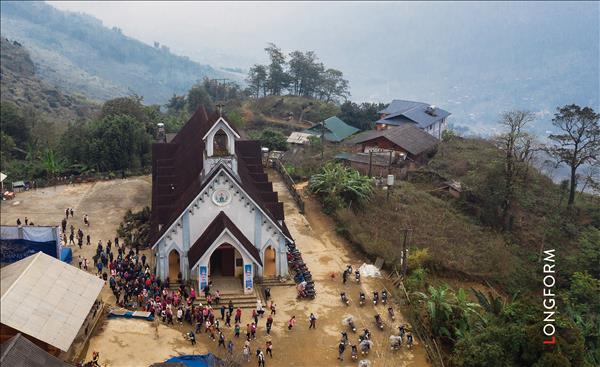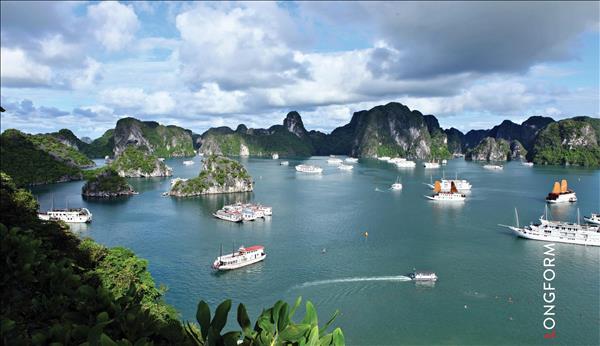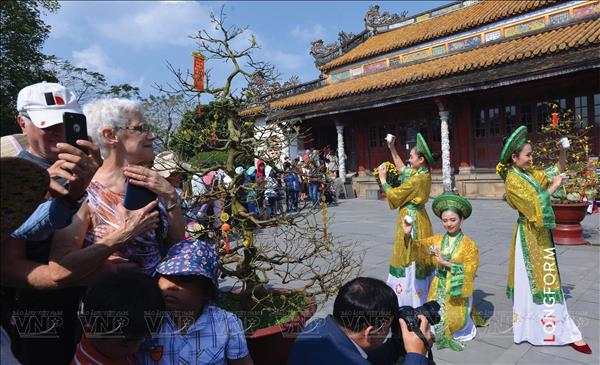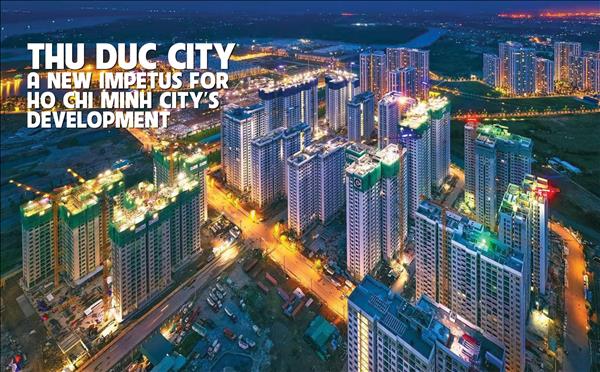Although Vietnam’s entry into the Trans-Pacific Strategic Economic Partnership Agreement (TPP) is still in the negotiation process, Vietnamese textile and garment enterprises have devised plans to prepare for their participation into this new potential but also challenging organisation.
The Number One Exporting Position of Vietnam
Exploring the opportunities and challenges of the textile and garment industry of Vietnam, before the country joins the TPP we carried out a survey to learn the reality of this number one exporter.
According to the Vietnam Textile and Apparel Association (VITAS), the textile and garment industry is one of the largest economic sectors in the country. It has 4,000 enterprises with a turnover of 20 billion dollars a year, accounting for 15% of GDP and making Vietnam the fifth largest textile and garment exporters in the world. Vietnamese textile and garment products have been exported to 180 countries and territories in the world, in which the largest markets are the United States, Europe and Japan.
To learn more about the reality of this sector, we went to visit Dong Nai Garment Joint-Stock Company (Donagamex) in Bien Hoa 1 Industrial Zone in Bien Hoa City, Dong Nai Province. Although it was after New Year Festival, the workers were busy at work filling orders for export. According to the leaders of the company, although it is the beginning of the year, the company has received orders for September, 2014. This year, Donagamex strives to reach an export turnover of 47 million dollars, an increase of 10% over last year. The company has operated seven sewing lines in Dong Xoai Town of Binh Phuoc Province and will add 15 lines at Dong Xuan Loc Garment Company in Xuan Loc District, Dong Nai Province. It is expected that these lines will start operation in June of this year.
In Ho Chi Minh City, we went to the factory of Nha Be Corporation (NBC), one of the leading exporters of the textile and garment industry in the country. The factory mainly focuses on key products, such as suits and high-grade shirts which are highly competitive in the world market. Besides the oversea markets, NBC also provides its products for the domestic market because currently it is also a potential market.
Along with NBC, many enterprises in this sector have made great investments in researching the markets, building their brands, enhancing technology and designs, and developing new products. At the same time, they have actively participated in many stimulus programmes, such as the “Vietnamese people use Vietnamese products” and the “Garment enterprises accompany islanders of the Fatherland”. These efforts have helped promote the domestic market of the textile and garment industry with an average growth of 15-18% a year.
The Vietnam National Textile and Garment Group (Vinatex), a “big master” in this sector has a greater ambition, i.e., becoming a multi-national group among the top ten textile and garment groups in the world by 2015. Now, Vinatex has trade relations with over 400 groups and companies of 65 countries and territories with an annual export turnover accounting for over 20% of the total garment export turnover of the country.
Besides its plan to expand long-term co-operation with strategic investors in the spirit of equality and mutual benefits, Vinatex also attaches special importance to the training of human resources at intermediate and advanced levels to ensure the stability of the workforce. Ho Chi Minh City Vinatex Economic-Technical College is one of the prestigious schools which has been assigned with this task. At present, it is collaborating with Hung Yen University of Technology and Education, Hanoi National University of Education and Hanoi University of Science and Technology to train cadres at BA and MA levels to meet the requirements and improve the qualifications of the cadres of the sector. Vinatex has also constantly improved the machines and equipment and promoted scientific and technical research. For many years, the Textile Research Sub-Institute in Ho Chi Minh City has been active in researching and developing many types of machines and technology for the effective production and export of the garment industry.
With the above-mentioned appropriate policies and strategies, along with the world economic situation which has signs of recovery, while the consumers’ demand on garment products and the production capacity are on the rise, in 2014 the textile and garment industry is expected to continue developing and reach an export turnover of 22-23 billion dollars, an increase of more than 10% over last year (compared with 20.4 billion dollars in 2013).
Prospects and Challenges of Joining the TPP
At the 19th TPP official negotiation round in late August, 2013 many experts affirmed that the textile garment industry of Vietnam was internationally competitive and was able to enjoy benefits from the trade treaties. This is also a reason that the textile and garment industry is a top prioritised sector in the negotiations about Vietnam joining the TPP.
According to Le Tien Truong, Deputy Chairman of VITAS and Standing Deputy General Director of Vinatex, 60% of Vietnamese garment exports are mostly concentrated in the TPP member countries, so Vietnam will enjoy preferential tariffs when it joins the TPP.
This is a favourable factor for the Vietnamese textile and garment enterprises to increase their export market share, especially in the US market because Vietnamese garment exports are levied with a tax of about 17-18%. After Vietnam joins the TPP, the tax will be gradually reduced to 0%. With the original rules encouraging the use of the materials from the TPP block, in the long term, Vietnam will invest in the production of materials, specifically fibers and dyes. Importantly, the textile and garment industry will have more opportunities to build an auxiliary sector for itself.
While discussing the TPP negotiations during an official visit by US Secretary of State John Kerry in December, 2013, Vietnamese Prime Minister Nguyen Tan Dung affirmed that Vietnam would closely cooperate with the United States in this process and expected that there would be flexibility suitable to the development level of each country, in which attention would be given to the core interests of Vietnam. This is in accordance with the viewpoints of the leaders of the TPP member countries towards a treaty with equal benefits for all members.
The advantage of the Vietnamese garment industry at the TPP threshold lies in the unanimity of the local enterprises and the great assistance of the US Association of Importers and Consumers. When Vietnam becomes a TPP member, it will be in the same block with the United States and the American consumers will get benefits because Vietnamese garment exports will enjoy a preferential tax rate, which means the Americans can buy Vietnamese garments at a cheaper price.
As calculated by experts, if Vietnam joins the TPP market, the export turnover of the Vietnamese textile and garment industry in the US market will increase threefold, from 8.6 billion dollars in 2013 to over 20 billion dollars by 2020.
The current problem is that the textile and garment industry of Vietnam still largely depends on imported materials and accessories. So the development of the local source of materials and accessories requires a linkage among the businesses in the sector with the establishment of a closed production process, from fibers to weaving, dying and sewing; gradually changing the operational modes, from the outsourcing to the Free on Board (FOB) and Original Design Manufacturer (ODM). This will help increase the localization rate of the industry, enhance value of the products and reduce trade deficit. It is expected that the garment industry will achieve a localization rate of about 60% by 2015 and 70% by 2020. At that time, the industry will really benefit from the taxes.
In fact, several years ago, many FDI businesses in Vietnam invested in the production of materials and accessories for the textile and garment sector. The Vietnamese textile and garment enterprises should be well aware of this to have suitable directions to seize the opportunities when Vietnam joins the TPP.
Being a major business of this sector, Vinatex is investing in the materials production projects, focusing on the fiber and textile projects, such as two solid dyed fabric factories with a capacity of 40 million meters/year, two yarn dyed fabric factories with a capacity of 12 million meters/year and a fleece fabric factory with a capacity of six million meter/year.
These investments are aimed at waiting for export opportunities when Vietnam joins the TPP. Vinatex has also studied and built a garment development diagram in the localities, depending on the labour source and the transport conditions, to have a long-term development direction for the whole sector.
Hopefully, with a reasonable calculation and investment strategy, the textile and garment industry will have a big breakthrough in the export turnover when Vietnam joins the TPP.
| « The market of the countries which participate in the TPP negotiations is very large, involving 12 countries with about 790 million people, accounting for one thirds of the global trade value. » |
According to the Vietnam Textile and Apparel Association (VITAS), the textile and garment industry is one of the largest economic sectors in the country. It has 4,000 enterprises with a turnover of 20 billion dollars a year, accounting for 15% of GDP and making Vietnam the fifth largest textile and garment exporters in the world. Vietnamese textile and garment products have been exported to 180 countries and territories in the world, in which the largest markets are the United States, Europe and Japan.
To learn more about the reality of this sector, we went to visit Dong Nai Garment Joint-Stock Company (Donagamex) in Bien Hoa 1 Industrial Zone in Bien Hoa City, Dong Nai Province. Although it was after New Year Festival, the workers were busy at work filling orders for export. According to the leaders of the company, although it is the beginning of the year, the company has received orders for September, 2014. This year, Donagamex strives to reach an export turnover of 47 million dollars, an increase of 10% over last year. The company has operated seven sewing lines in Dong Xoai Town of Binh Phuoc Province and will add 15 lines at Dong Xuan Loc Garment Company in Xuan Loc District, Dong Nai Province. It is expected that these lines will start operation in June of this year.
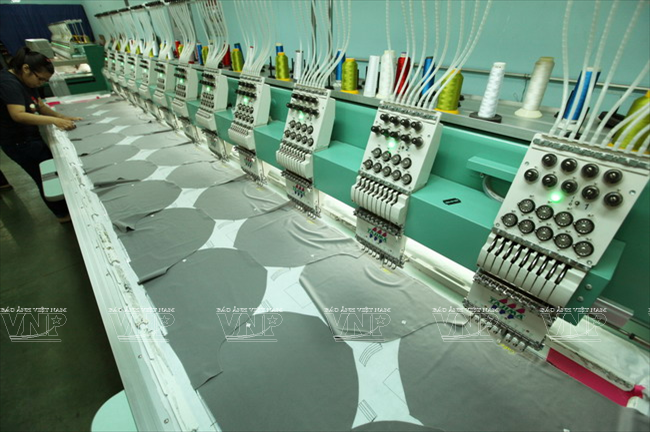 Vinatex focuses on projects to produce auxiliaries and materials in the service of production. 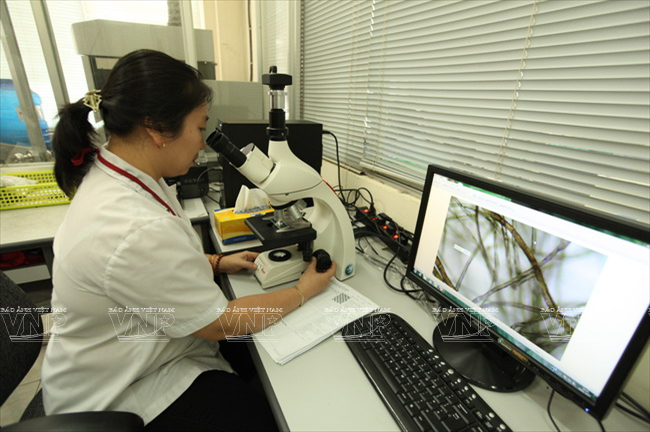 Analysing the fibers at the Ho Chi Minh City’s Textile Research Sub-Institute. 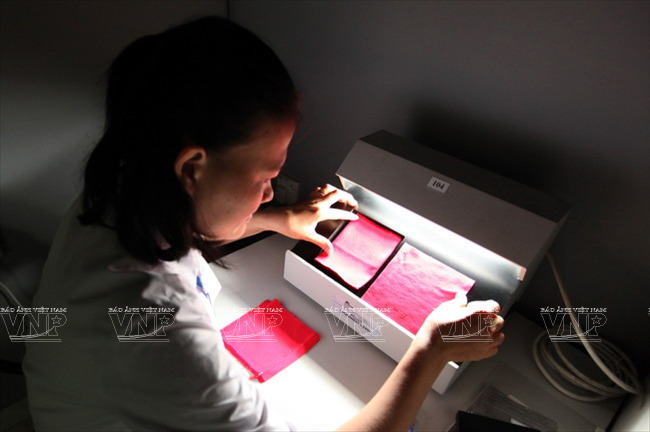 Assessing colours of cloth in the lab of Ho Chi Minh City’s Textile Research Sub-Institute. 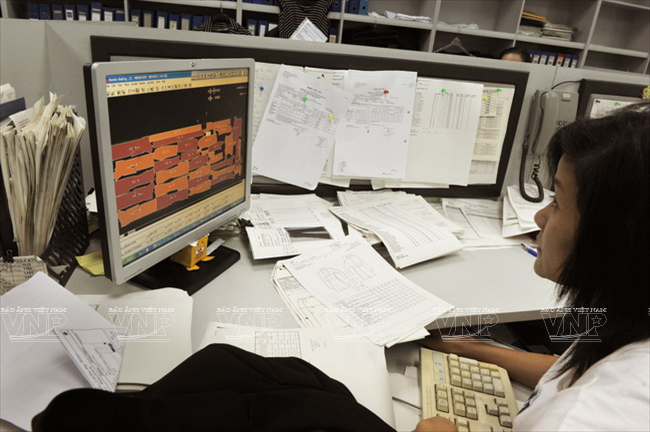 Vietnam’s textile and garment companies now pay more attention to investment in designing styles. 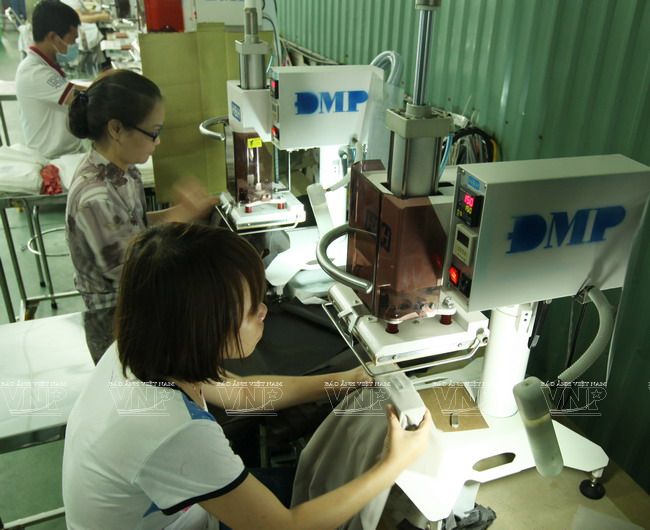 Pressing labels to serve the textile and garment sector at Dong Nai Garment Joint-Stock Company. 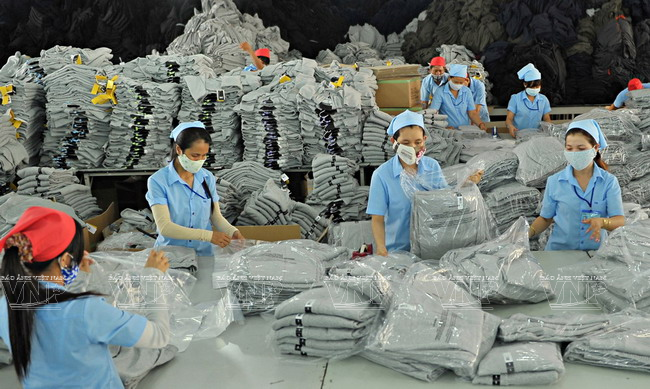 Vietnam’s textile and garment industry, which leads the country in terms of export turnover, expects to see a leap when Vietnam joins the TPP.  High-class shirts, the key product of Nha Be Corporation, are highly competitive in the international market. 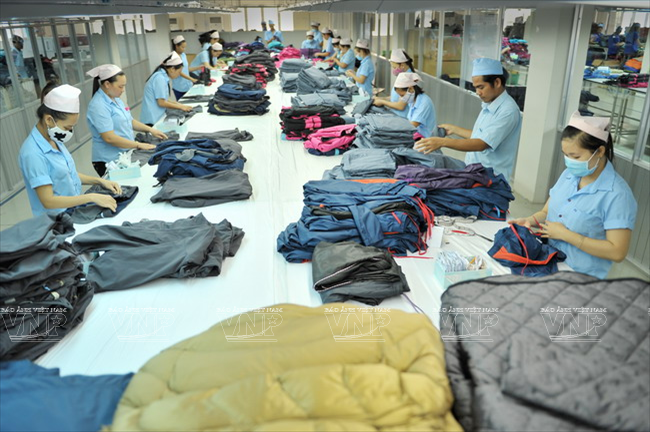 Vinatex strives for becoming a multi-national group among the top ten textile and garment groups in the world by 2015. 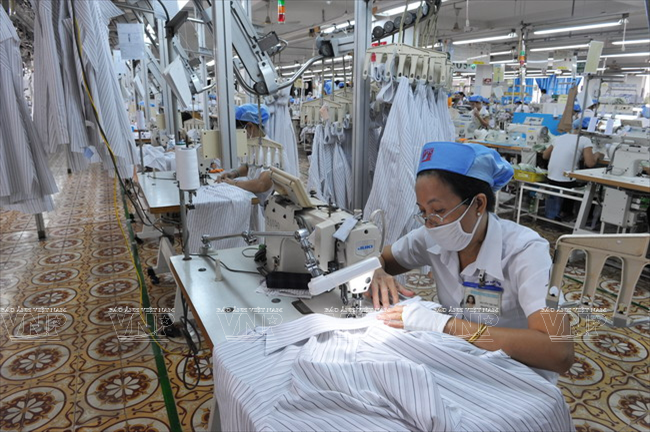 The shirt production line of the Viet Tien Garment Joint-Stock Corporation. 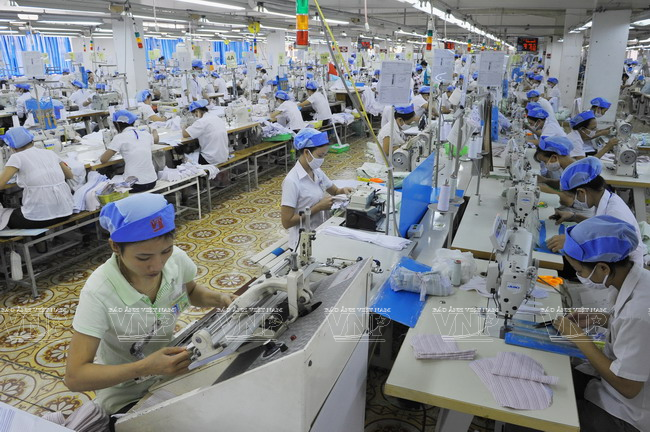 Vietnam’s textile and garment sectors have an abundance of well-trained human resources. 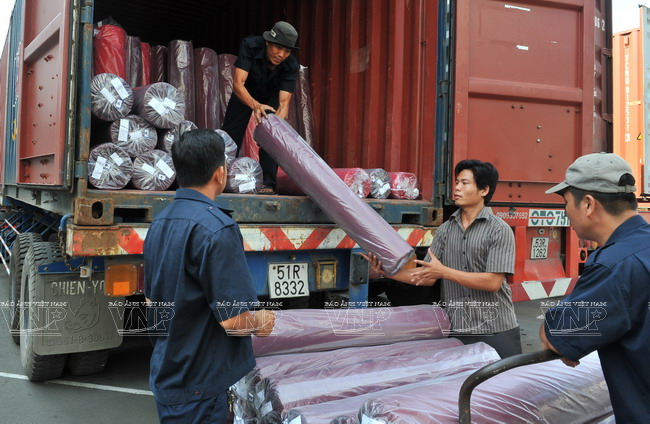 Vinatex focuses on projects to produce auxiliaries and materials in the service of production. 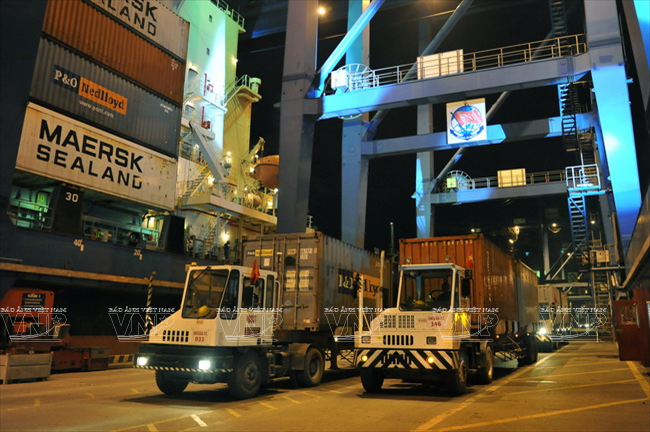 Tan Cang Port in Ho Chi Minh City, one of the ports for garment and textile exports. 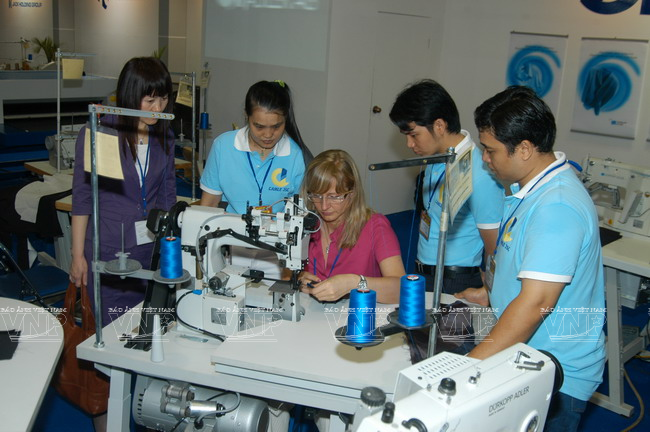 Foreign partners learn about the garment auxiliary sector in Ho Chi Minh City. |
| «
The goal of the TPP agreement is that from 2015, about 90% of import and export taxes among the member countries will be reduced to zero.
» |
Along with NBC, many enterprises in this sector have made great investments in researching the markets, building their brands, enhancing technology and designs, and developing new products. At the same time, they have actively participated in many stimulus programmes, such as the “Vietnamese people use Vietnamese products” and the “Garment enterprises accompany islanders of the Fatherland”. These efforts have helped promote the domestic market of the textile and garment industry with an average growth of 15-18% a year.
The Vietnam National Textile and Garment Group (Vinatex), a “big master” in this sector has a greater ambition, i.e., becoming a multi-national group among the top ten textile and garment groups in the world by 2015. Now, Vinatex has trade relations with over 400 groups and companies of 65 countries and territories with an annual export turnover accounting for over 20% of the total garment export turnover of the country.
Besides its plan to expand long-term co-operation with strategic investors in the spirit of equality and mutual benefits, Vinatex also attaches special importance to the training of human resources at intermediate and advanced levels to ensure the stability of the workforce. Ho Chi Minh City Vinatex Economic-Technical College is one of the prestigious schools which has been assigned with this task. At present, it is collaborating with Hung Yen University of Technology and Education, Hanoi National University of Education and Hanoi University of Science and Technology to train cadres at BA and MA levels to meet the requirements and improve the qualifications of the cadres of the sector. Vinatex has also constantly improved the machines and equipment and promoted scientific and technical research. For many years, the Textile Research Sub-Institute in Ho Chi Minh City has been active in researching and developing many types of machines and technology for the effective production and export of the garment industry.
With the above-mentioned appropriate policies and strategies, along with the world economic situation which has signs of recovery, while the consumers’ demand on garment products and the production capacity are on the rise, in 2014 the textile and garment industry is expected to continue developing and reach an export turnover of 22-23 billion dollars, an increase of more than 10% over last year (compared with 20.4 billion dollars in 2013).
Prospects and Challenges of Joining the TPP
At the 19th TPP official negotiation round in late August, 2013 many experts affirmed that the textile garment industry of Vietnam was internationally competitive and was able to enjoy benefits from the trade treaties. This is also a reason that the textile and garment industry is a top prioritised sector in the negotiations about Vietnam joining the TPP.
According to Le Tien Truong, Deputy Chairman of VITAS and Standing Deputy General Director of Vinatex, 60% of Vietnamese garment exports are mostly concentrated in the TPP member countries, so Vietnam will enjoy preferential tariffs when it joins the TPP.
This is a favourable factor for the Vietnamese textile and garment enterprises to increase their export market share, especially in the US market because Vietnamese garment exports are levied with a tax of about 17-18%. After Vietnam joins the TPP, the tax will be gradually reduced to 0%. With the original rules encouraging the use of the materials from the TPP block, in the long term, Vietnam will invest in the production of materials, specifically fibers and dyes. Importantly, the textile and garment industry will have more opportunities to build an auxiliary sector for itself.
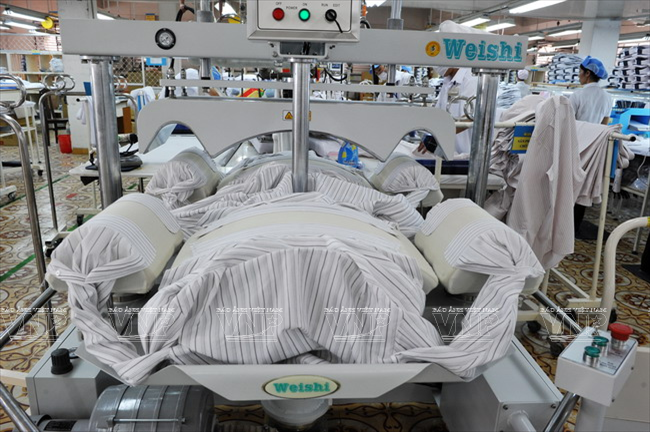 The system of modern machines for producing exports of the Viet Tien Garment Joint-Stock Corporation. 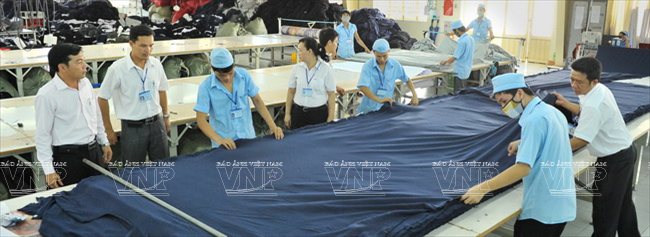 Nha Be Corporation always uses high quality material resources to produce exports to meet the demand of foreign customers. 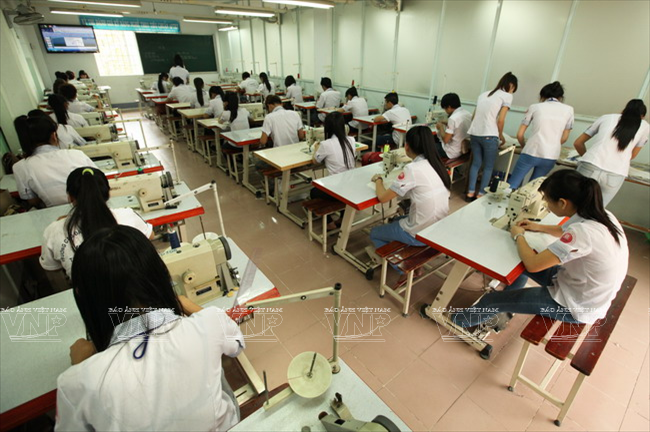 Ho Chi Minh City’s Vinatex Economic-Technical College trains high quality human resources for Vietnam’s textile and garment industry. 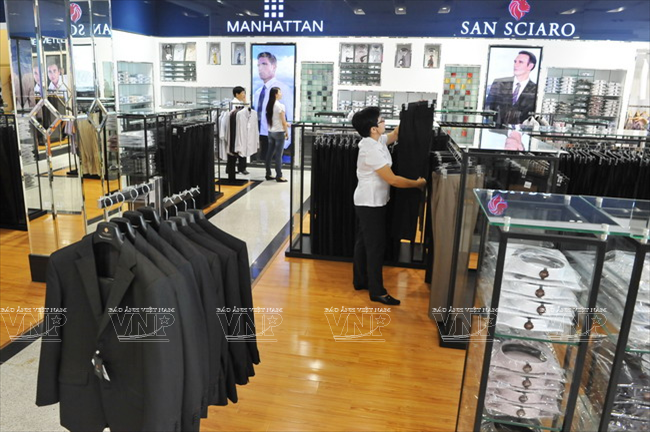 A showroom of Viet Tien Garment Joint-Stock Corporation. 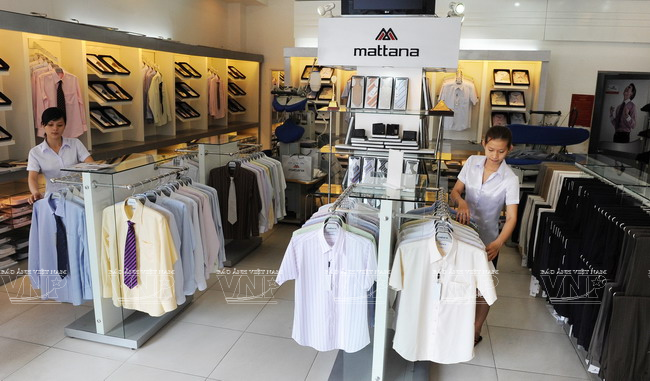 Many garment and textile enterprises have strategic plans to prepare for joining the TPP. |
| «
It is estimated that if Vietnam joins the TPP, the textile and garment sector can maintain its turnover growth rate of 15-20% in the 2014-2017 period. Its export turnover can reach 25 billion dollars by 2017 and 50 billion dollars by 2020. »
|
The advantage of the Vietnamese garment industry at the TPP threshold lies in the unanimity of the local enterprises and the great assistance of the US Association of Importers and Consumers. When Vietnam becomes a TPP member, it will be in the same block with the United States and the American consumers will get benefits because Vietnamese garment exports will enjoy a preferential tax rate, which means the Americans can buy Vietnamese garments at a cheaper price.
As calculated by experts, if Vietnam joins the TPP market, the export turnover of the Vietnamese textile and garment industry in the US market will increase threefold, from 8.6 billion dollars in 2013 to over 20 billion dollars by 2020.
The current problem is that the textile and garment industry of Vietnam still largely depends on imported materials and accessories. So the development of the local source of materials and accessories requires a linkage among the businesses in the sector with the establishment of a closed production process, from fibers to weaving, dying and sewing; gradually changing the operational modes, from the outsourcing to the Free on Board (FOB) and Original Design Manufacturer (ODM). This will help increase the localization rate of the industry, enhance value of the products and reduce trade deficit. It is expected that the garment industry will achieve a localization rate of about 60% by 2015 and 70% by 2020. At that time, the industry will really benefit from the taxes.
In fact, several years ago, many FDI businesses in Vietnam invested in the production of materials and accessories for the textile and garment sector. The Vietnamese textile and garment enterprises should be well aware of this to have suitable directions to seize the opportunities when Vietnam joins the TPP.
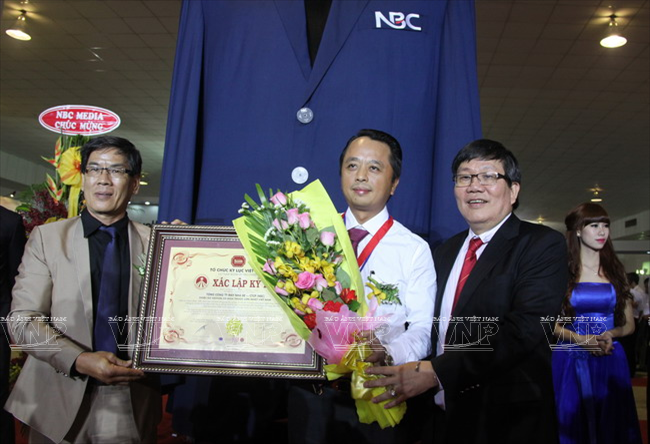 The representative of Nha Be Corporation receives Vietnam’s Guinness Record for a giant jacket.  Vietnam fashion’s products are present in both domestic and foreign fashion shows. |
Being a major business of this sector, Vinatex is investing in the materials production projects, focusing on the fiber and textile projects, such as two solid dyed fabric factories with a capacity of 40 million meters/year, two yarn dyed fabric factories with a capacity of 12 million meters/year and a fleece fabric factory with a capacity of six million meter/year.
These investments are aimed at waiting for export opportunities when Vietnam joins the TPP. Vinatex has also studied and built a garment development diagram in the localities, depending on the labour source and the transport conditions, to have a long-term development direction for the whole sector.
Hopefully, with a reasonable calculation and investment strategy, the textile and garment industry will have a big breakthrough in the export turnover when Vietnam joins the TPP.
Story: Nguyen Vu Thanh Dat - Photos: Kim Phuong
danghuyen

